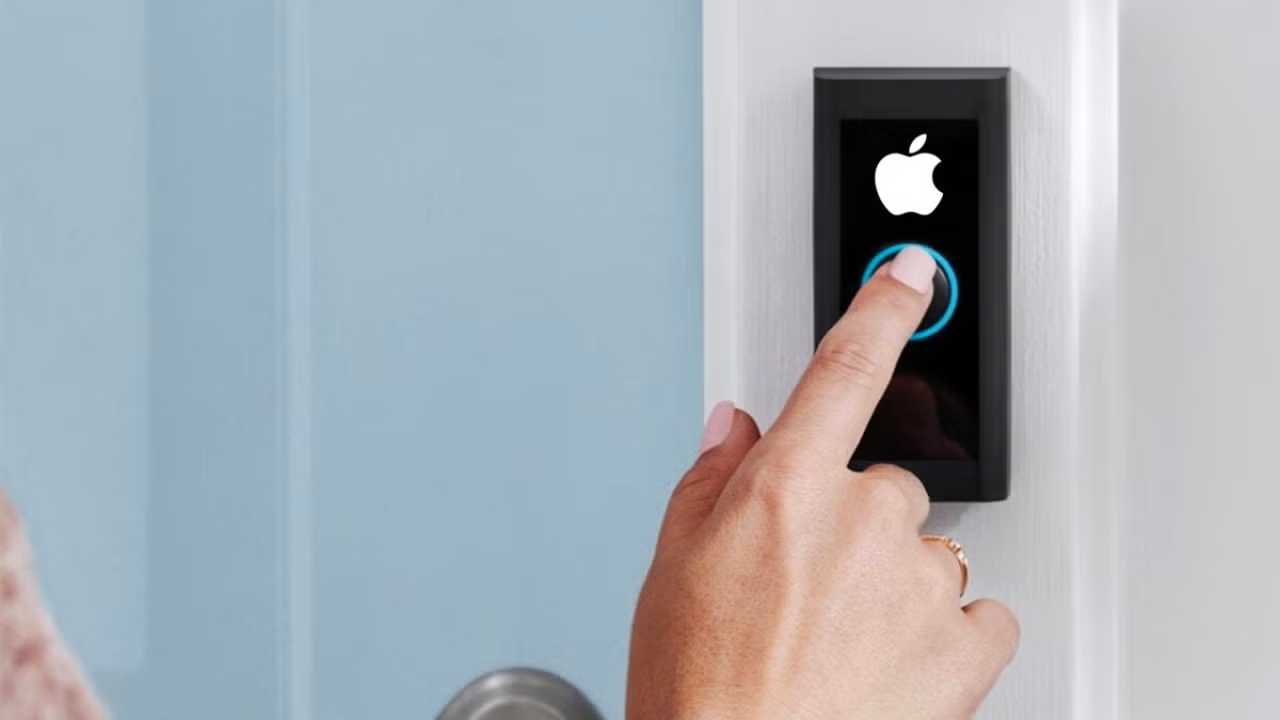Apple is known for revolutionizing everyday technologies, from smartphones and laptops to wearables and home devices. Now, it seems that Apple is expanding its footprint in the smart home market with a new smart doorbell that might come equipped with Face ID and iCloud support.
This ambitious new device promises to combine cutting-edge security technology with seamless integration into the Apple ecosystem, offering users a smarter, more secure way to monitor and interact with visitors at their door. But what exactly do we know about this potential game-changing product, and how will it fit into Apple’s growing array of smart home devices? Let’s take a closer look.
What We Know About Apple’s Smart Doorbell
Face ID Technology for Doorbell Security
One of the most exciting features rumored to be included in Apple’s smart doorbell is Face ID technology. Face ID, Apple’s advanced facial recognition system, has been a hallmark of its iPhone and iPad lineup for years, offering an unmatched level of security and user convenience.
Integrating Face ID into a smart doorbell would take security to the next level. The doorbell could recognize visitors as they approach and verify their identity based on pre-stored data. This could allow homeowners to receive personalized notifications about who is at their door, and it could potentially enable features like automatic unlocking for known visitors or family members.
For unfamiliar faces, the system might send an alert to the homeowner’s iPhone, iPad, or Apple Watch, allowing them to see who is at the door and take action accordingly, all while ensuring that privacy is maintained.
Seamless Integration with iCloud
Another key feature that is expected is iCloud support, which would enable the smart doorbell to integrate perfectly with other Apple devices and services. iCloud has long been the backbone of Apple’s ecosystem, offering cloud storage, backup, and synchronization across devices.
In this context, iCloud could allow the doorbell’s video feed and other data to be stored securely in the cloud. Homeowners would be able to access video recordings of visitors, manage settings, and control the device remotely from any Apple device linked to their iCloud account. This would offer seamless synchronization with other Apple smart home devices, including HomePod, Apple TV, and iPads, making it a highly integrated experience.
Video Streaming and High-Quality Camera
Apple’s rumored doorbell is expected to feature a high-definition camera that would allow homeowners to stream video footage directly to their Apple devices. Like other premium smart doorbells on the market, the device may feature features such as motion detection, night vision, and two-way audio, giving users the ability to speak with visitors remotely.
Additionally, the camera would likely integrate with Apple’s HomeKit ecosystem, allowing the doorbell’s footage to be displayed on any compatible Apple device, including smartphones, tablets, and smart TVs.
Potential Features and Use Cases
Smart Home Integration
As with many of Apple’s smart home products, this doorbell would likely work seamlessly with the HomeKit platform, making it a natural addition to any smart home setup. HomeKit’s compatibility with various smart devices means that the doorbell could trigger other actions when certain events occur, such as turning on lights when someone approaches or locking the door once a visitor leaves.
For example, when a visitor rings the doorbell, the system could automatically turn on lights in the entryway, display the live video feed on your Apple TV or iPad, and enable you to communicate with the visitor through your device. The integration with Siri, Apple’s voice assistant, would allow for hands-free control, such as asking Siri to “show me who’s at the front door.”
Security and Privacy
Given Apple’s commitment to privacy and security, the Face ID-enabled doorbell would likely include robust privacy measures. The use of encryption for video streams and facial data ensures that only authorized users can access the content. Additionally, it’s possible that Apple could offer a two-factor authentication option for homeowners, ensuring that their data remains secure even if someone gains unauthorized access to their Apple ID.
Real-Time Notifications and Alerts
Homeowners would receive real-time notifications of any visitors, whether they are recognized faces or unknown individuals. This could be especially helpful for families, especially if the device supports multiple user profiles, enabling personalized alerts for each member. For example, if your children are home alone, you might want to be notified of every visitor. If you’re away on vacation, you might want the system to prioritize alerts for unfamiliar faces only.
Apple’s Smart Home Strategy
Apple has been gradually expanding its presence in the smart home market, with devices such as the HomePod, Apple TV, and Apple Watch already playing crucial roles in smart home automation. The addition of a Face ID-enabled doorbell would further cement Apple’s role as a leader in the home security space, offering a sophisticated alternative to existing options from companies like Ring and Nest.
Apple’s focus on privacy and integration with its existing products could provide a significant edge in a market that is often criticized for data security and fragmentation. By focusing on seamless integration with the Apple ecosystem, this new device could make smart home technology more accessible and user-friendly for people already invested in Apple products.
What We Don’t Know Yet
While we’ve gathered plenty of insights about the potential features and functionality of Apple’s smart doorbell, there are still many unknowns. For instance, we don’t know the release date or price of the product, and while Face ID is expected to be a key feature, the specifics of its integration with a doorbell camera are still unclear.
Additionally, we don’t know whether this product will be available in select markets initially or if it will be a global release. Apple’s previous smart home products have had varying levels of availability depending on the region, so we may see this doorbell follow a similar strategy.
Conclusion: A New Era for Home Security
If the rumors are true, Apple’s smart doorbell with Face ID and iCloud support could revolutionize the way we think about home security. By combining advanced facial recognition, cloud storage, and seamless integration into the Apple ecosystem, this device could set a new standard for smart home security.
With Apple’s strong focus on privacy, ease of use, and innovative technology, this doorbell could become a game-changer for anyone looking for a more secure and intelligent way to monitor and interact with visitors at their doorstep. As we await official announcements from Apple, it’s clear that the future of home security is evolving, and Apple is set to be at the forefront.











